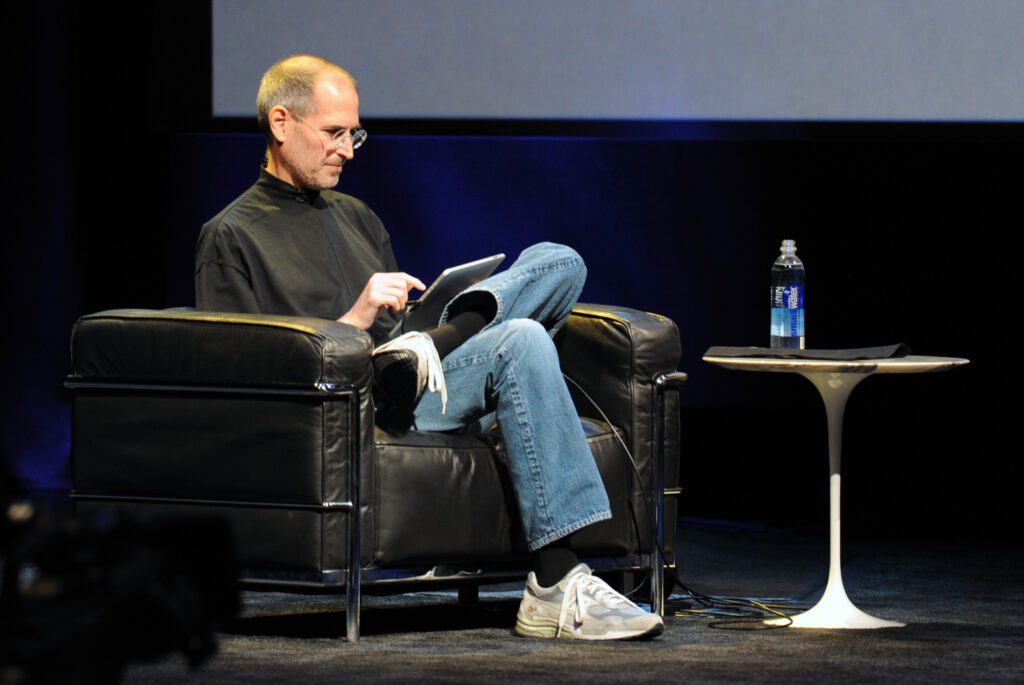Successful strategies require creativity, insight, and both internal and external focus. These are essential abilities that leaders need to possess. Jobs applied the concept of focus from Zen studies to the design of Apple products, creating simple and user-friendly products. In this era where focus is scarce, how can we cultivate it?
Kobun Otogawa, a Zen archery master from Japan, was invited to demonstrate his technique at the Esalen Institute, a renowned adult learning center located in Big Sur, California. It can be reached by driving from the Tassajara retreat, a Zen center in the outskirts of San Francisco.

On that day, a small round hill with lush green grass stood tall on the edge of the Pacific, displaying a target. Kobun Otogawa positioned himself at a considerable distance from the target, assuming the stance of a traditional archer. With his back straight, he slowly drew the bow, paused for a moment, and then released the arrow.
The arrow soared far beyond the target, forming an arc across the sky before descending into the Pacific. Everyone watching nearby was astonished.
Kobun Otogawa then joyfully exclaimed, “Bullseye!”
The philosopher Arthur Schopenhauer once said, “Only a genius can hit a target that others cannot see.”
Steve Jobs’ Zen Way: The Importance of Deciding What Not to Do
Kobun Otogawa was the Zen teacher of Steve Jobs, the legendary CEO of Apple Inc. In the realm of the unseen goals, Jobs hit upon a concept that was considered radical at the time: designing computers that were not only for tech enthusiasts but also easily understandable and usable by anyone.
It was an approach that no other computer company had thought of.
First, it was the Apple desktop computer, and then Jobs’ team transferred the user-friendly approach to the iPod, iPhone, and iPad. Each of these products was something we didn’t know we needed—or couldn’t even imagine—until we saw how useful they were.
When Jobs returned to Apple in 1997 (he had been forced to leave Apple in 1984), he found the company with a multitude of products—computers and various computer peripherals. The Macintosh computer alone had 12 different models. Apple was in trouble, and Jobs’ strategy was simple: focus.
Apple abandoned the practice of having multiple products and planned to focus on only four: two desktop computers and two laptops, each targeting two different markets—consumers and professionals. Just as in Jobs’ Zen practice, recognizing that you are distracted will help you concentrate. He understood that “deciding what not to do is equally important as deciding what to do.”

Jobs was very strict in both his personal and professional life when it came to filtering out what he considered unimportant. But he knew that to effectively simplify, you need to understand the complexity you are reducing.
There was a single simplification decision that fully embodied Jobs’ famous quote: Make it so that Apple product users can accomplish anything in three clicks or fewer. Behind this strategy, there was a need to deeply understand the functions of the instructions and buttons that had to be abandoned and find concise and elegant alternatives.
🔍 Finding New Possibilities
Even a century before the emergence of Apple computers, another radical vision led to the tremendous success of Singer sewing machines worldwide. Their disruptive assumption was that homemakers could operate mechanical devices—a radical idea in the 19th century when women were still far from gaining voting rights. Additionally, Singer made it easier for women to purchase the machines by offering them credit loans—an additional innovation.

In 1876 alone, Singer sold 262,316 machines, which was an astronomical number at the time. One of the founders built the Dakota apartments, which have now become a landmark in Manhattan, New York, and a place where celebrities like Yoko Ono and John Lennon have resided. The Singer Building, a towering 47-story structure built in 1908, was the tallest building in the world at that time.
Cultural changes bring forth numerous possibilities, such as housewives starting to use sewing machines, and subsequently, due to the increasing availability of inexpensive products from foreign labor, they began purchasing ready-made clothes for their families.
Other new possibilities, such as new consumer demographics, purchasing methods, derived needs, technology, sales channels, information systems, and so on, each progress provides opportunities for many potential success strategies.
🎨 The Art of Leadership – Strategy
Apple and Singer left fresh footprints in the snow, leaving their competitors scrambling to catch up. Today, there is a group of consultants for small industries that specialize in providing guidance for standard strategic choices for businesses. However, those ready-made strategies on the bookshelves merely fine-tune organizational strategies and cannot change the rules of the game.
The word “strategy” originates from the battlefield, meaning “the art of leaders.” In the context of that time, leaders referred to generals, and strategy referred to how to deploy resources, while tactics referred to how to attack. Nowadays, leaders need to formulate strategies that make sense within the larger system in which they operate; this is the mission of external focus.
A new strategy means that you will change your past operational methods from now on and shift to a completely new focus. In other words, if you want to create radical and innovative strategies, you must perceive a novel perspective, something that your competitors have not seen. Winning strategies are within reach for everyone; it’s just that most people turn a blind eye to them.
The army of consultants can provide detailed analytical tools for strategy adjustments, but when they must answer this grand question, they are at a loss: Where does a winning strategy initially come from? A classic paper on strategy left this comment casually but without further explanation: Discovering a winning strategy “requires creativity and insight.”
To create innovative strategies, one must be aware of new perspectives.
📃 Internal Focus and External Focus
These two elements mentioned above require both internal and external focus. When Mark Benioff, the founder and former CEO of Salesforce, discovered the potential of cloud computing, he closely paid attention to the evolving technology that could change the system—an external focus.
At the same time, based on his intuition, he made judgments about how a company providing such services should operate. Salesforce used the cloud to assist various businesses in managing customer relationships, and it quickly established a prominent position in this highly competitive field.
The best leaders possess systemic awareness, which helps them answer ongoing questions:
- Where should we be heading?
- How do we get there?
When combined with self-mastery and social skills (built upon attention to oneself and others), it forms emotional intelligence (EQ) that drives humans toward their desired goals. A leader must assess potential strategic options and all known factors.

Once a strategy is chosen, the leader needs to apply cognitive empathy and emotional empathy, communicating passionately and skillfully with others. However, if a leader lacks strategic wisdom, possessing these personal skills alone will lead to failure.
“If you think in a systemic way,” Larry Brilliant points out, “it will guide you through values, vision, sense of purpose, strategy, goals, tactics, evaluation, doable things, and feedback loops that restart the entire process.”


